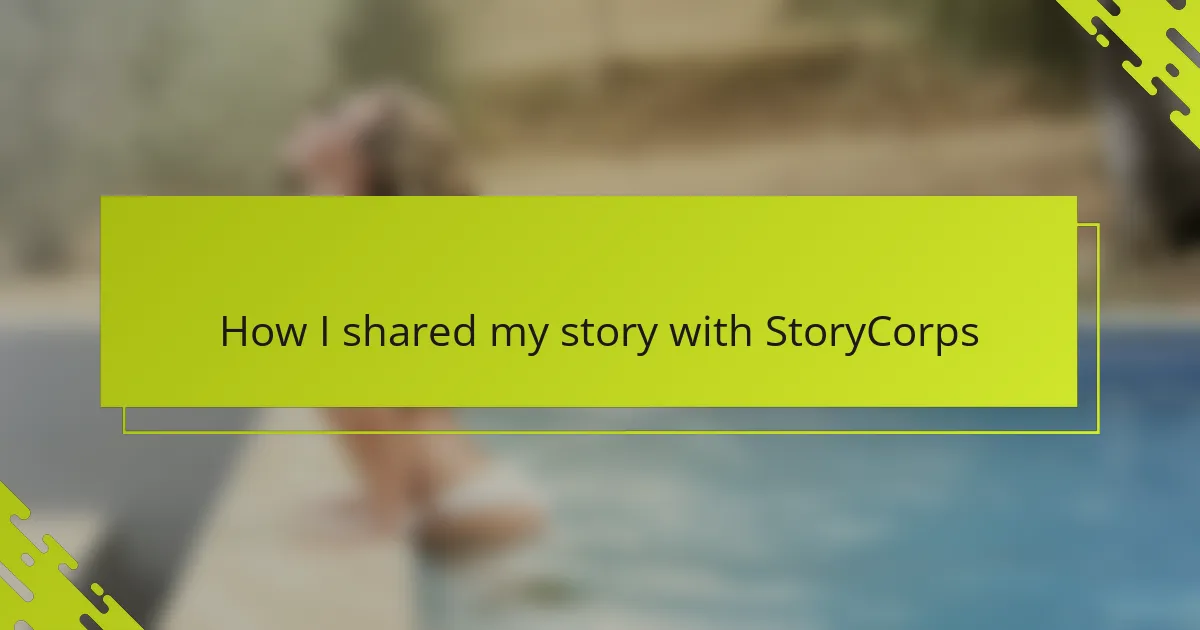Key takeaways
- Queer women culture emphasizes shared experiences and connections, fostering community through storytelling and representation.
- StoryCorps provides a platform for preserving personal histories, encouraging individuals to share their truths in an intimate manner.
- Preparing to share a story involves reflection and trust, allowing for genuine connection rather than performance.
- Navigating challenges as a queer woman leads to resilience, communal solidarity, and the transformative power of vulnerability in storytelling.
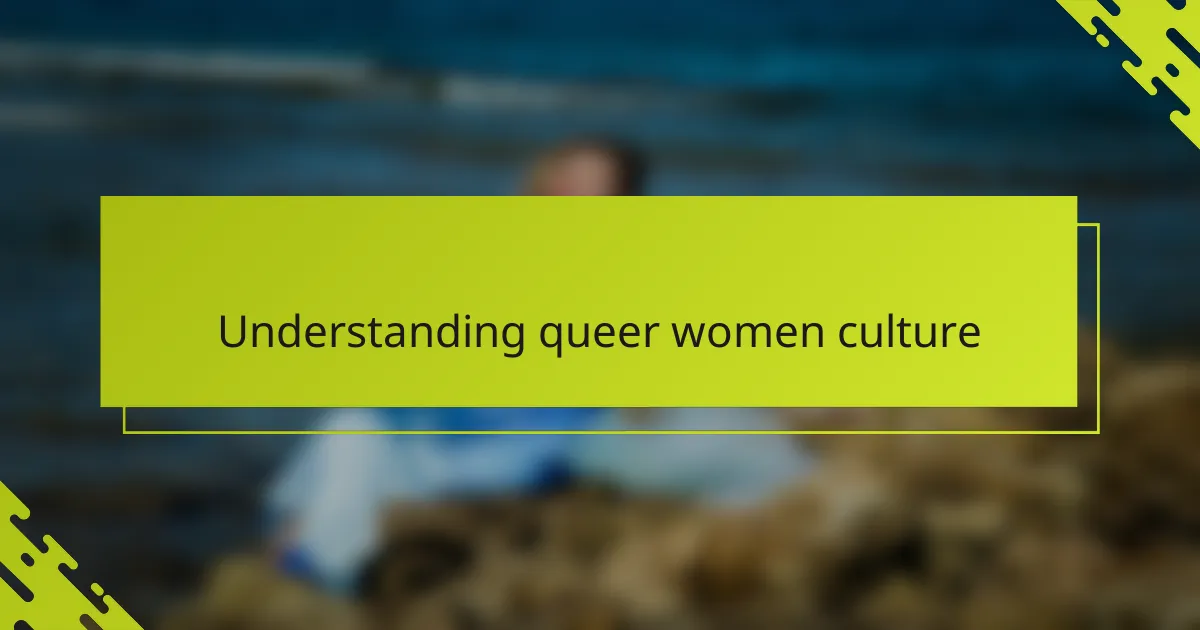
Understanding queer women culture
Queer women culture is a vibrant tapestry woven from diverse experiences, identities, and histories. I’ve found that understanding it means embracing the complexity beyond labels—seeing the stories of resilience, joy, and community that often go unheard. Have you ever noticed how something as simple as a shared song or inside joke can create an unspoken bond that feels deeply affirming?
For me, queer women culture is as much about the quiet moments of connection as it is about the bold expressions of identity. It’s in those small but powerful instances that we see our shared humanity reflected back, reminding us why representation and storytelling matter so much. Sometimes, I’ve felt that these stories hold the key to unlocking empathy and breaking down misunderstandings.
What struck me most was how queer women culture challenges conventional norms while creating new spaces for authenticity and freedom. It’s a dynamic, evolving culture that invites us all to reconsider what community means and how we support one another. Isn’t that a beautiful kind of revolution?

Exploring StoryCorps storytelling platform
When I first stumbled upon StoryCorps, I was immediately drawn to its simple yet profound mission: capturing everyday stories that carry so much weight. What I appreciate most is how accessible the platform makes storytelling, inviting everyone to share their truths in an intimate, conversational way.
Using StoryCorps felt like sitting down with a close friend, where every pause and laugh mattered just as much as the words themselves. Have you ever experienced that kind of deep connection in conversation? For me, it transformed what I thought storytelling could be—less about performance, more about genuine human moments.
What’s powerful about StoryCorps is its commitment to preserving these personal histories, especially those like ours that often go unheard. I realized this platform isn’t just about telling a story; it’s about building bridges across different experiences and creating a collective archive of voices that shape who we are.
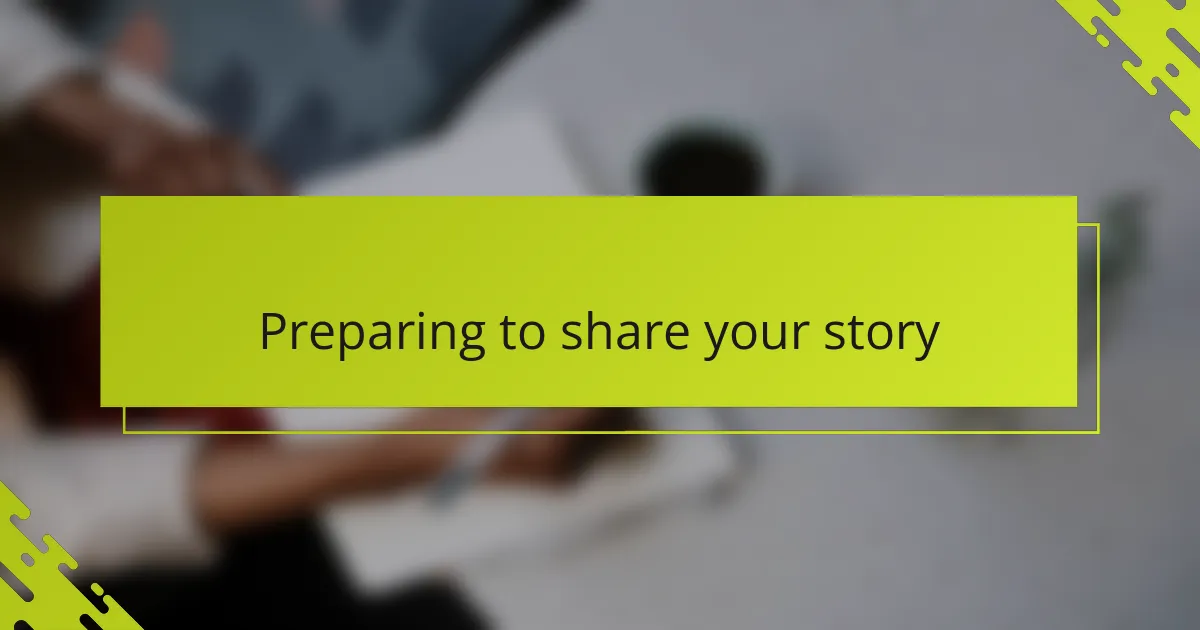
Preparing to share your story
Getting ready to share your story with StoryCorps isn’t something I rushed into lightly. I spent time reflecting on what parts of my experience I felt ready to reveal—and what I wanted to hold close. Have you ever felt the mix of excitement and nerves right before opening up to someone new? That balance taught me a lot about vulnerability and trust.
I also found it really helpful to jot down key moments or feelings I wanted to explore. It wasn’t about scripting every word, but about creating a loose map to guide the conversation. This little preparation made me feel grounded, like I was carrying a compass rather than a script into that intimate space.
Most of all, I reminded myself that this was my story—no pressure to perform or say the “right” thing. StoryCorps, after all, is about the richness of genuine human connection, not perfection. That mindset shift turned nerves into a quiet excitement I hadn’t expected. Have you ever noticed how just lowering the stakes can open up so much space for honesty?
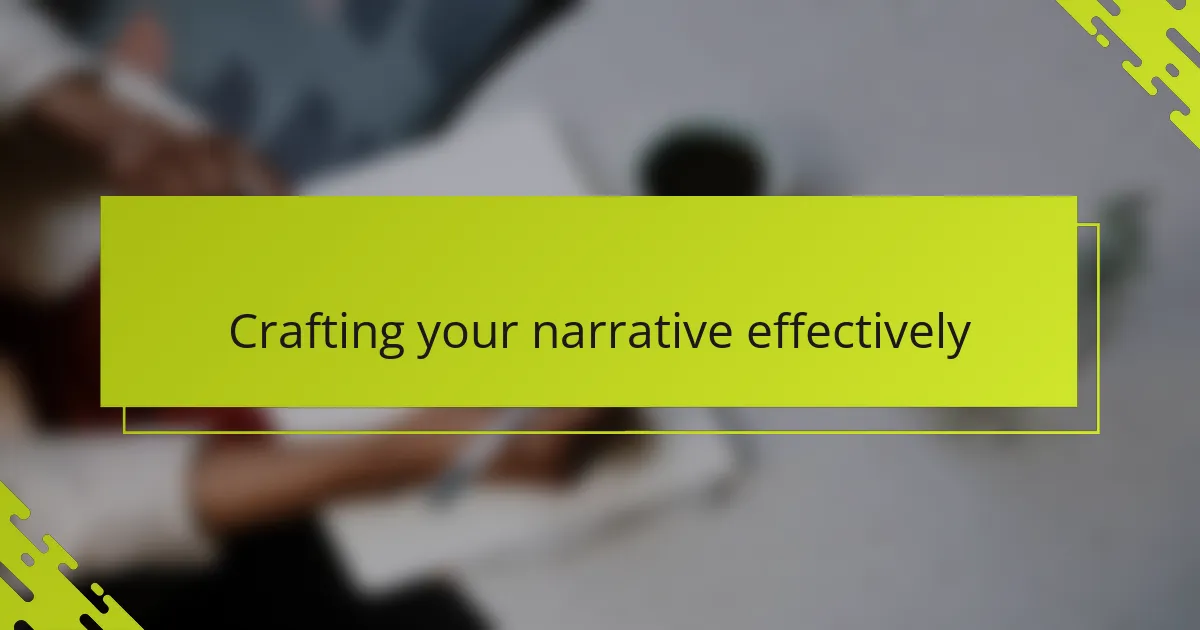
Crafting your narrative effectively
Finding the heart of your story is what truly brings it to life. I remember sitting quietly, asking myself which moments resonated most deeply—was it the challenges, the small victories, or the unexpected joys? When you focus on those authentic emotions, your narrative naturally gains clarity and power.
It’s tempting to want to cover everything, but I’ve learned that trimming the details can make your story more compelling. What if you treated your story like a favorite song, choosing only the verses that move you the most? That kind of selective telling has a way of creating intimacy, drawing listeners in like they’re right there with you.
And don’t underestimate the value of your voice—the way you say something can be just as revealing as the words themselves. I found that allowing pauses, laughter, or even a quiet moment of reflection added layers of meaning. Have you noticed how silence can sometimes say more than a thousand words? Crafting your narrative effectively is as much about these subtle choices as it is about the story itself.

Navigating challenges as a queer woman
Navigating challenges as a queer woman often means carrying a dual weight—facing misunderstandings from outside communities while also grappling with pressures within queer spaces. I remember times when I questioned where I truly belonged, feeling caught between wanting acceptance and needing to protect my authentic self. Have you ever felt that tension, wanting to be seen fully yet fearing rejection?
There’s also the ongoing negotiation with societal expectations—like the assumptions about relationships, gender expression, or even safety. For me, each day brought small tests of resilience, from navigating conversations that felt like minefields to asserting boundaries in places that should have felt welcoming. It’s exhausting, but those moments also taught me how fiercely I can advocate for myself and others.
What I find most powerful is the way these challenges have shaped a deep sense of community and solidarity. Sharing stories, like through StoryCorps, becomes a radical act of trust and healing. When I listen to others’ journeys, I see reflections of my own struggle and strength—reminding me that while the path isn’t always easy, it’s ours to walk with courage and connection.
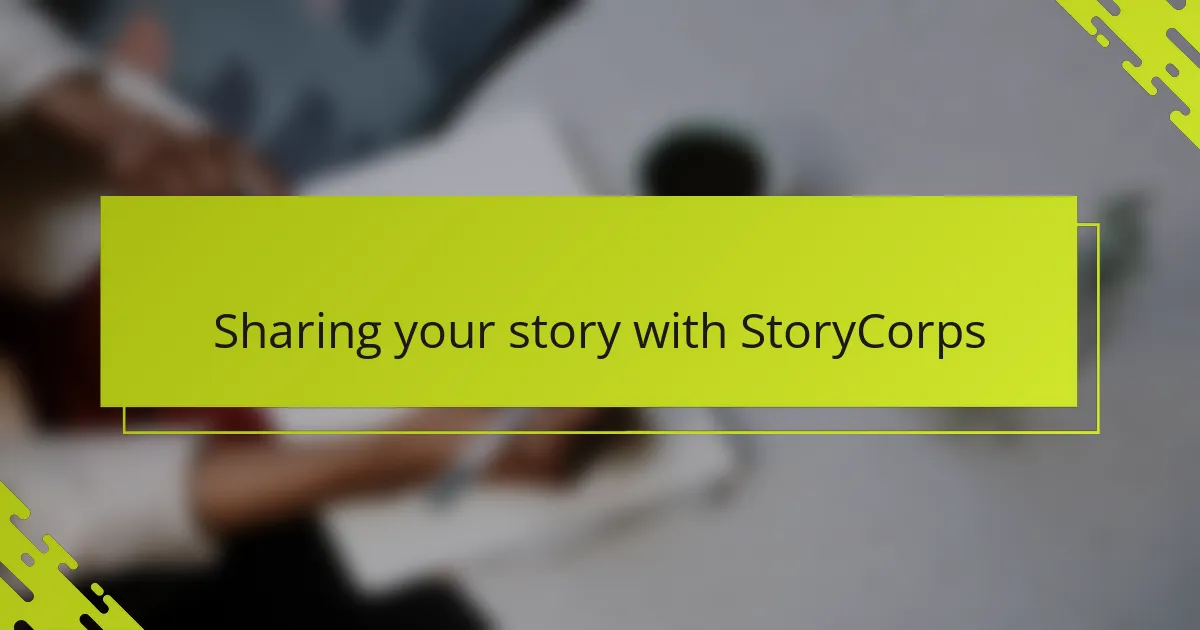
Sharing your story with StoryCorps
Sharing your story with StoryCorps felt surprisingly natural, even though I was opening up about parts of myself I rarely voice. Have you ever found comfort in simply being heard without judgment? That’s exactly what StoryCorps created for me—a safe space to express my truth in its rawest form.
I remember how the conversation flowed like an intimate chat with someone who truly cared. It wasn’t about rehearsed lines but about those small moments of honesty, laughter, and sometimes silence that said so much more. It made me realize how powerful vulnerability can be when it’s met with genuine listening.
What struck me most was knowing that my story would join thousands of others, creating a mosaic of queer women’s experiences that often go unseen. It’s humbling and empowering to be part of something bigger—sharing not just for myself, but for anyone who might find a piece of their own journey in mine.
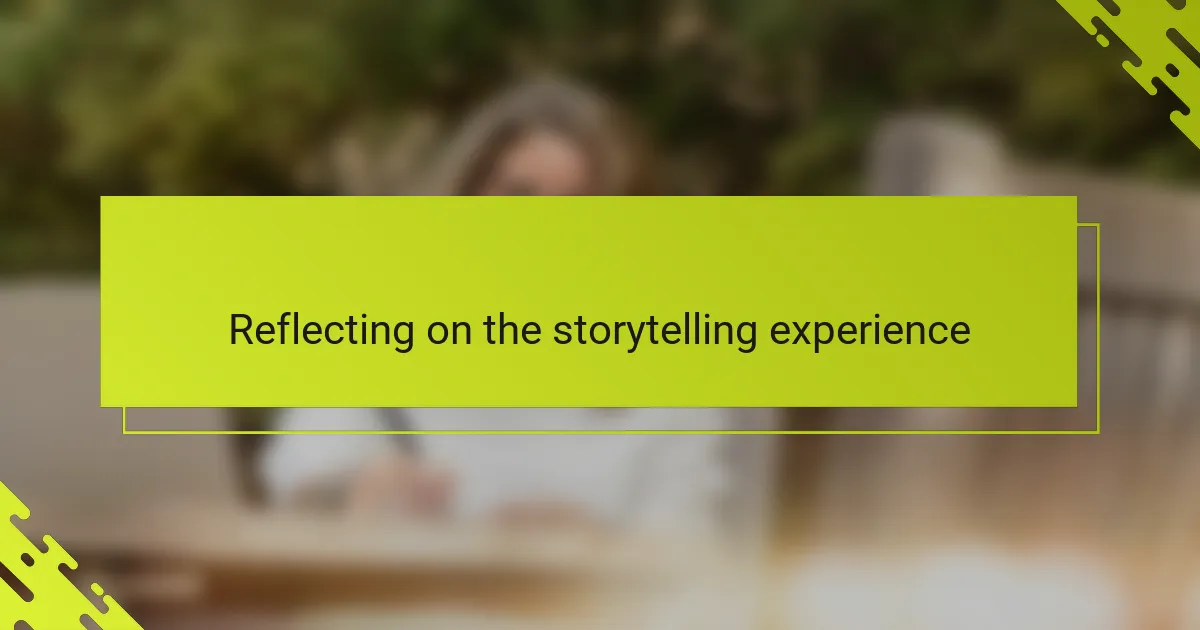
Reflecting on the storytelling experience
Looking back on the storytelling experience, I realize how unexpectedly cathartic it was. Sitting with my own words, letting them unfold naturally, brought a clarity I hadn’t anticipated. Have you ever been surprised by how sharing your story can reveal new layers of understanding about yourself?
There were moments when I felt vulnerable, raw even, but also deeply seen. It’s strange how speaking aloud something you’ve carried quietly can lighten that weight, creating space for healing. I think that’s the real gift of telling our stories—not just to be heard, but to truly be acknowledged.
What I’ve learned is that storytelling through StoryCorps isn’t just about the past; it’s about connection in the present. That shared moment of authenticity with a listener who honors your experience can transform something private into a collective thread of resilience and hope. Isn’t that what makes this process so powerful?
